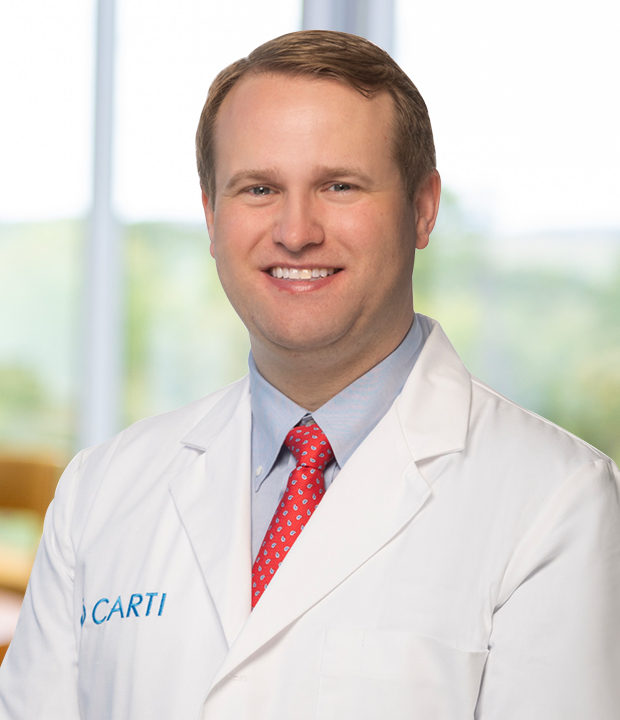The Right to Try Q&A with Kamal Patel, M.D., Medical Oncologist
As seen in the September/October issue of Healthcare Journal of Arkansas. Featuring Kamal Patel, M.D., Medical Oncologist.
A terminal diagnosis comes with different feelings for all involved, but generally the same outcome for the sentenced. We automatically use terms like fight, hold strong, pray, hope for a miracle, and/or acceptance. Terminal is often where you really see the complexity and resourcefulness of the healthcare industry. The tenacity of humans as we try to avoid a seemingly early demise for our fellow man becomes a puzzle for researchers, practitioners, patients, and caregivers. For all who are not quite ready to go or let go, it is a race against time, and sometimes a confusing maze that leads to lots of dead ends, any of which can be terminal.
In 2018, the Trickett Wendler, Frank Mongiello, Jordan McLinn, and Matthew Bellina Right to Try Act was passed into U.S. law.
Can you please explain the difference between Right to Try, expanded access, and compassionate use?
Dr. Kamal Patel While they are separate laws, at the most basic level they are truly the same thing. To put these programs into perspective, one needs to understand that there is a standard of care that dictates the recommended diagnostic and treatment process for any given malignancy. As part of their care plan, patients will undergo various forms of therapy. Once all FDA-approved available treatments have been exhausted, and the patient still has a good performance status, we may consider enrolling the patient in an expanded access program or Right to Try for additional investigational treatments.
Expanded access, also known as compassionate use, provides patients diagnosed with a life-threatening disease or condition access to an investigational medical product (drug, biologic, or device) for treatment outside of a clinical trial. This route is taken when the patient has exhausted all other available options. The Right to Try Act, signed into law on May 30, 2018, allows patients who have been diagnosed with a life-threatening disease or condition to have access to certain eligible drugs. These experimental therapies have completed Phase 1 testing, but have not yet been approved by the Food and Drug Administration (FDA).
Right to Try sounds like a gift to terminal patients who do not qualify for a clinical trial, and in some cases might be better for an individual patient than a trial. Do you agree?
Patel Both of these avenues of additional treatment options are a gift to patients, especially for patients who are unable to participate in a clinical trial due to their inability to travel to a large academic facility who is hosting the trial. Financial and location barriers are frequent eliminators for patients when exploring available clinical trials, so to be able to make these investigative means available to patients through individual or intermediate compassionate use means is a blessing. While both the physician and the patient know the risk associated, and that it may not be the cure-all needed, at least it gives the patient one more option to try when they’ve exhausted all other available treatments. Gaining access to it at their local cancer care provider makes it easier on the patient—physically, mentally, and emotionally. As part of our mission, CARTI supports and participates in clinical trials as a way to provide the best treatment options to our patients, and to expand our knowledge of the most advanced cancer treatments. The clinical trials we participate in primarily look at investigational products that may extend a patient’s chance for survival with fewer adverse effects. CARTI’s clinical research department is currently enrolling patients in clinical trials through the expanded access program. Additionally, on occasion we have been able to secure an investigational product for compassionate use.
What are the pros and cons of Right to Try and expanded access?
Patel PROS: By definition, these laws givepatients access to novel treatments offstudy. They gain the ability to try one moreoption that they might otherwise have beenineligible for based on various financial orlocation barriers. If the patient has a goodperformance status of a 1 or 2, they shouldbe able to try any and all available options,even investigational.CONS: Because expanded access and
Right to Try make investigational medical products available to patients, there is always an inherent risk of adverse side effects. As the physician, I always consider the fact that I am the connecting link between the patient and the sponsor, and at the end of the day, I’m the one signing off on my patients partaking in these investigative treatments. That is why I am so grateful for our entire clinical research team for their diligence in exploring early study results, and ensuring we are enrolling our patients in studies we feel comfortable with. Additionally, their continued monitoring of patients ensures that we are watching them as they progress through the trial. CARTI has a dedicated team of nurses and study coordinators assigned to support our principal investigators in conducting a clinical trial. Each trial has a schedule of events that must be strictly followed, and all data must be reported. Institutional Review Boards (IRB) and study sponsors also monitor the site’s activities to assure patients’ safety, and the quality of the reported data. Conducting a treatment trial requires a large commitment of resources from an organization, and this limits the number of clinical trials an organization can successfully conduct. Completing the requirements of an expanded access program or Right to Try would be difficult and time consuming without a research staff familiar with the regulatory and reporting processes. There is no compensation to the site for this process, so this could be a potential roadblock for some physicians who do not have the dedicated staff.
Are you seeing promising results at your facility for either Right to Try or expanded access?
Patel The expanded access program (EAP) we currently have patients enrolled in deals with patients who have KRAS-mutated metastatic colorectal cancer. The treating physician completes a treatment request form and seeks approval from the sponsor. The physician checks patient eligibility for ongoing clinical trials and contraindications. Once approval is given, the IRB approves the site to provide treatment, and an informed consent form is provided. The physician explains the treatment to the patient or legal representative, along with expected adverse effects, and ensures that the patient understands the information. Once informed consent is signed, the treatment period begins. In this situation, the sponsor is supplying the investigational product free to the patient. All other standard care is billed to the patient’s insurance. The research staff maintains all regulatory documents and drug accountability. The physician also reports any adverse reactions to the sponsor and IRB. We recently enrolled our patients in the EAP, so unfortunately, it is too soon to have any results. However, the results from the early phase clinical trials are promising, and our patients are very happy to have an opportunity to participate and receive the investigational product. Naturally, they want to explore every shot available at extending their survival and improving their quality of life. It is CARTI’s mission to provide compassionate care with an innovative approach, and I feel clinical trials, expanded access, and Right to Try do just that.
What resources would a physician use to stay up to date on expanded access and Right to Try options/ successes?
Patel Prior to COVID-19, I had frequent in-person meetings with medical science liaisons from the pharmaceutical companies to learn about new investigational drugs in their clinical trial pipelines. Today, while we must adapt to virtual meetings, we remain in close contact. They summarize the outcomes of early phase studies, and gauge our interest in participating in upcoming clinical trials. These liaisons are a great resource for information on expanded access or compassionate use programs for their companies. We also utilize clinicaltrials.gov to identify clinical trials for various indications. The most recent EAP was brought to our attention by the patient. She discovered the EAP on the sponsor’s website, approached her physician about the program, and he acted on it. There are a number of ways to find these programs.
How do you know when it is time to stop the race and let the inevitable progress?
Patel As an oncologist, I have had the unfortunate job to discuss end of life many times with my patients. I have found that this topic does not simply span one singular conversation, but many throughout the course of treating a patient. I try to get to know my patients and understand what their wishes are as they move through their treatment journey, so that when we find ourselves at the stage where treatment is no longer working, we have a foundation on which to build those next steps. The patient’s performance status will drive the treatment options, and if the patient maintains a good performance status, we will continue seeking alternative treatment options. However, once the patient’s performance status reaches a grade 3 or 4, we must transition into discussing end of life care.






